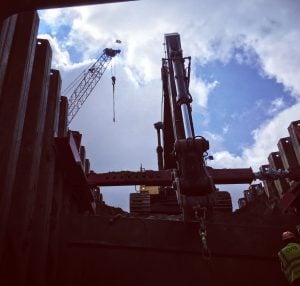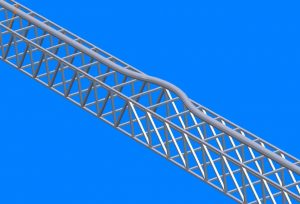Since I was asked to offer my outlook for 2006, I can only assume I did an incredible job of predicting 2005! That’s right, back in January 2005 I offered my opinion of “what does 2005 hold for the scaffold industry?” This year I have been asked to do the same for 2006. So, the only conclusion that I can think of is that all my predictions came true last year. Let’s check it out and see how I did:
I predicted that over one hundred fatalities would occur involving scaffolds. I was really hoping I’d be wrong on this but it appears that we didn’t improve on this record much in 2005.
I predicted that training would not live up to expectations. Based on my personal experience, and from what I’m told by others, this prediction continues to remain true. While the industry continues to provide training, it’s amazing how much more we have to do. Perhaps some of it has to do with the turnover rate in the construction industry. Perhaps it has something to do with the language barriers so prevalent on many construction sites. Whatever the cause, 2006 will continue to provide huge opportunities to improve the knowledge and expertise of the construction worker, especially as it relates to scaffolding. What can you do to help?
In January 2005 I complained that individuals would continue to “refuse to accept responsibility for their actions.” I don’t know, has this changed?
In January 2005 I thought life would be good in the scaffold business. From what I read and hear, looks like I was right on this one—can’t say I can take responsibility for this growth though. Everybody seems to be busy; why not continue this level of activity for another year. I predict that 2006 will be another good year.
I expressed the opinion that the federal government would not increase funding for OSHA. I was right about this. In fact, for 2006, I think we will continue to see a lack of commitment by the federal government to support OSHA, the OSHA Training Institute, and the various programs that are essential if we expect to see any improvement in the safety and welfare of the worker.
In January 2005 I predicted that certain irresponsible scaffold suppliers would continue to use workers that are not fully trained. Can it be possible that in 2006 this can change? I don’t think it will, by why not surprise me?
The fact is, back in January 2005 the outlook I saw, and the predictions I made were predictable. None of this should surprise you if you are at all familiar with the scaffold industry. Construction work is unique. For example, scaffold erection and dismantling work is tough. It demands physical agility, stamina and manual dexterity. It exposes workers to hazards that the average employee would never accept. Scaffold users face similar situations. Imagine if the typical office worker had to climb a ladder 30 feet or more in height to get to his or her desk. Imagine if that desk was in an office where the temperature varied anywhere from below zero to above a hundred degrees (Fahrenheit that is). Finally, imagine that you received little or no training in the work you were expected to do. Oh yeah, every week the office furniture gets moved around so nothing is the same! And people think that construction work is a no brainer.
We struggle to find qualified workers that will work for the wages offered. We expect these workers to follow instructions in spite of the fact that we cannot communicate in the same language. We blame the inefficiencies on the worker, the schedule, the system, or the project. Unfortunately we don’t seem to be focusing on the factors that can change the industry.
Yes, 2006 can be a good year. In spite of the needless obstacles we find in the industry, I think that we will continue to improve the safety and the welfare of the scaffold erector and user. Will this progress be reflected in a decrease in injuries and fatalities? It will take all of us to make 2006 the year it should be. You need to be part of it.













